

William Stopford
4 Days Ago
The future of the rotary might be uncertain, but you can still buy this fully functional pint-size scale model.

Contributor


Contributor
This pint-sized rotary is an amazing tribute to the simplistic design invented by Felix Wankel some 65 years ago. Size and weight has always been the rotary engine’s forte, but this miniature functional model takes the compact concept to the next level.

Although the future looks bleak for the rotary in production vehicles, you can still nab one of these micro rotary engines and put it into any number of scale models, from boats to cars, and even model airplanes.

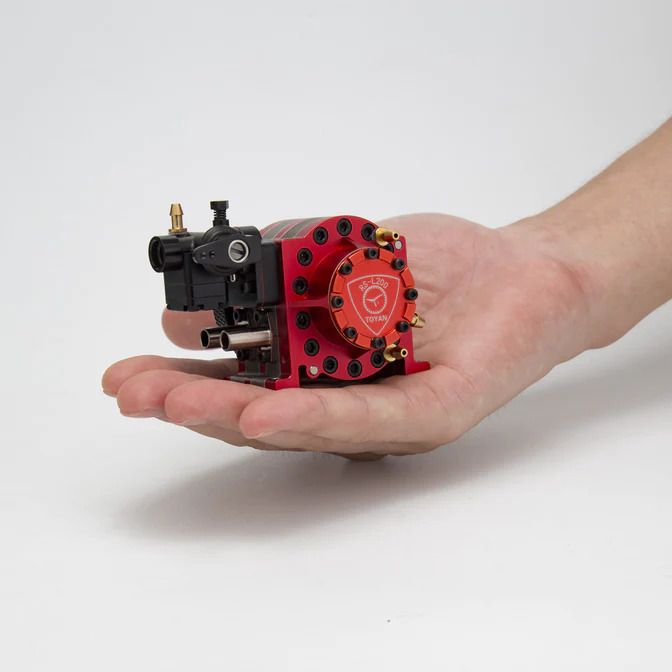
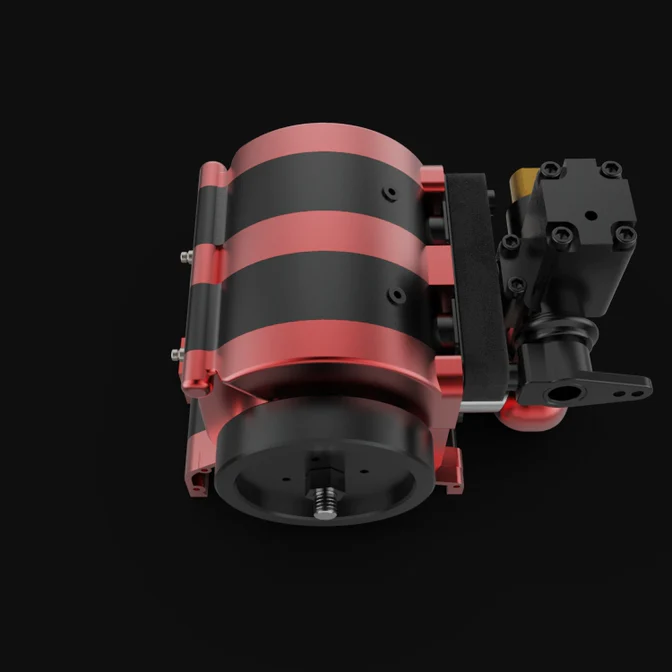
YouTuber “Warped Perception” bought one of these baby rotaries and turned the wick up to double what the engine was rated to, all so you don’t have to. The sound this tiny package produces is impressive to say the least!
This video shows the single-rotor version, and with a twin-rotor version available, we are hoping to hear someone else grab one before we have to shell out our own money to make a video.
Displacing just 2.46cc in the single-rotor model, and 5.2cc for the twin-rotor version, these baby motors weigh just 415 grams, and produce 0.7hp (0.5kW) on the single rotor and 1.5hp (1kW) for the twin-rotor.
The rotor is made of precision alloy material, with a triangular rotor with rounded sides and a high wear-resistant diamond seal design, and the triangular tip slides along the wall of the chamber to ensure good sealing, just like the real deal. Each motor features a single carburettor design, which is adjustable by the user. The units come supplied with a removable straight exhaust pipe design that allows subsequent installation of a muffler for quieter operation.


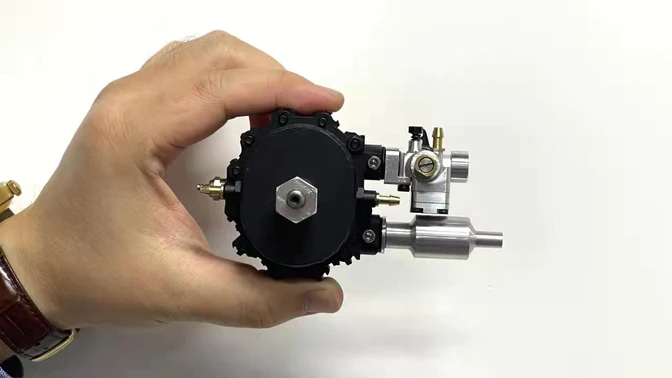

In the video we get to see the engine stripped down into its bare components, which is a fantastic way to show anyone who is confused as to how even a full-sized rotor works. Their simplistic and basic design is truly a sight to behold.
A rotary consists of just a handful of essential components: the flywheel; rear, front and centre housing; a crank; and the rotor itself. In this model fuel supply is controlled by a miniature carburettor, and ignition comes via a micro glow plug.
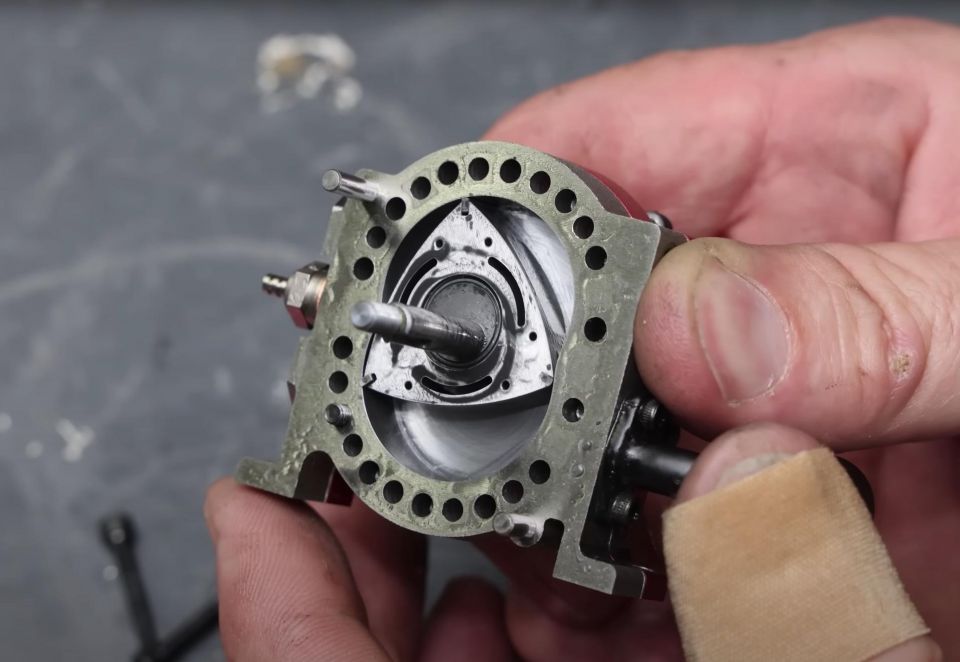

Warped Perception shows us the tiny little apex seals – those pesky little things that usually are the first failing point on a real rotor. In order to keep compression in the chamber, the three tips of the triangular rotor must form airtight seals against the interior casing housing.
These seals at the three apexes of the triangle are called the apex seals. Apex seals are usually made of metal, and are pushed against the housing by springs. In the video, you can see the tiny apex seals at the tip of a pen, and at one stage he struggles to re-insert the baby apex seal.
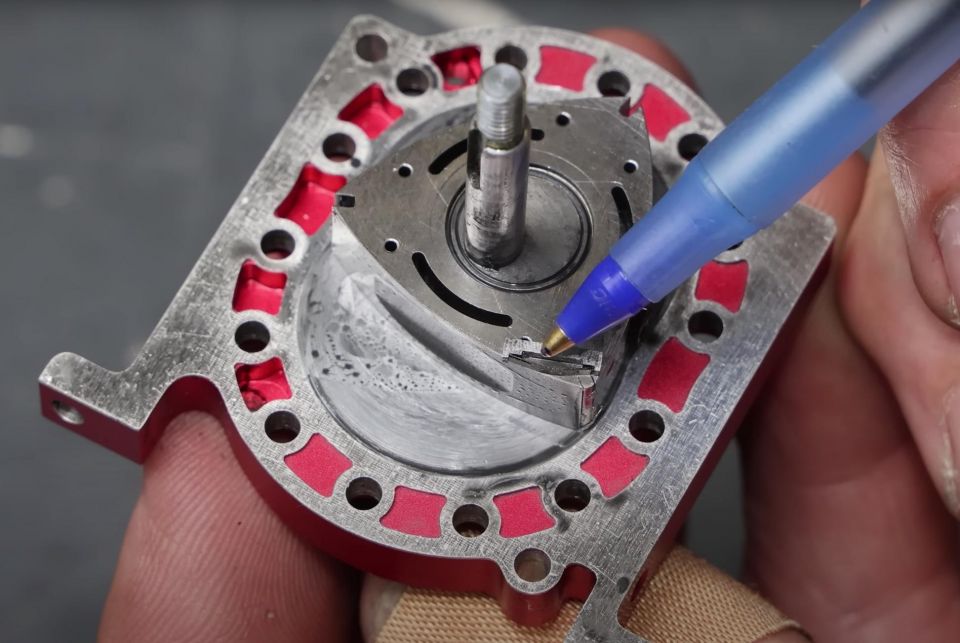
Check out how small the rotor is when placed next to a 13B rotor from a Mazda RX-7.

At one point in the video, we get to see a laser tachometer zapping the flywheel to show the baby rotor absolutely screaming along at a whopping 30,000rpm!


True to form, the rotary did start to fall apart, with the glow plug melting and the exhaust falling off, but considering it was spinning at double what the manufacturer suggests is the safe working limit, that’s not so unexpected.
If you want one of these for yourself, they are $US499USD ($AU720) for the single rotor and $US699 ($AU1009) for the twin.
| Details | RS-S100 | RS-L200 |
|---|---|---|
| Material | Metal Alloys | Metal Alloys |
| Brand | TOYAN | TOYAN |
| Form | Assembled | Assembled |
| Displacement | 2.46cc | 2.6cc (x2) |
| Number of Rotors | Single rotor | Twin rotor |
| Compression Ratio | 8.2:1 | 8.2:1 |
| Speed | 3000-16500rpm | 2200-18500rpm |
| Power | 0.72ps@14,800rpm | 1.5ps |
| Weight | 415g (bare metal) | 767g |
| Lubrication | Premixed oil | Premixed oil |
| Cooling | Water-cooled | Water-cooled |
| Start Mode | Electric Start | Electric Start |
| Start Power | 2S-3S lithium battery | 2S-3S lithium battery |
| Fuel | 20-25% nitro fuel | 20-25% nitro fuel |
Mark Trueno is a CarExpert Contributor.


William Stopford
4 Days Ago


James Wong
2 Days Ago


Andrew Maclean
2 Days Ago


Max Davies
1 Day Ago


Max Davies
1 Day Ago


Josh Nevett
19 Hours Ago